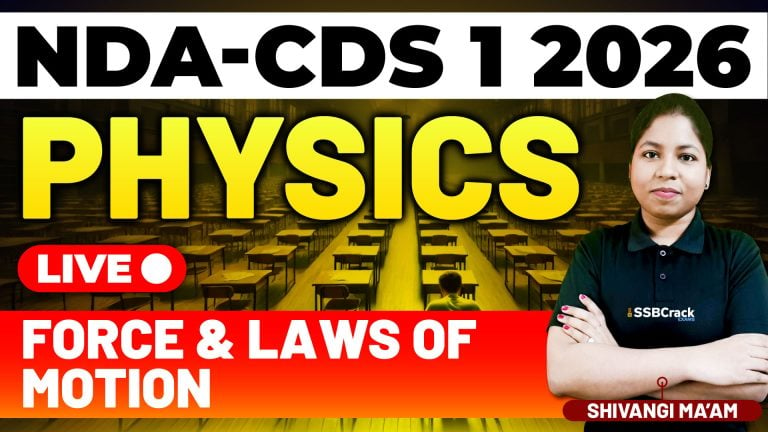The journey to success in the NDA-NA Exam involves rigorous preparation and a strong grasp of key mathematical concepts. One such crucial topic in Paper I Mathematics is Sequences and Series. Recently, our class dedicated to this topic provided an in-depth understanding and practice of various sub-topics, essential for excelling in the exam. This blog will highlight the key points discussed in the class, share effective strategies for mastering Sequences and Series, and provide tips for excelling in the NDA-NA Exam.
Understanding Sequences and Series
Sequences and Series are fundamental concepts in mathematics, forming the basis for understanding patterns and progressions. A sequence is an ordered list of numbers following a specific pattern, while a series is the sum of the terms of a sequence.
Key Sub-Topics Covered:
- Sequence:
- A sequence is an arrangement of numbers in a particular order.
- Each number in the sequence is called a term.
- Series and Progression:
- A series is the sum of the terms of a sequence.
- Progression refers to the specific order in which the terms of a sequence are arranged.
- Arithmetic Progression (AP):
- In an AP, the difference between consecutive terms is constant.
- This difference is known as the common difference.
- Arithmetic Mean (AM):
- The arithmetic mean is the average of two numbers.
- It is commonly used to find the middle term of an AP.
- Geometric Progression (GP):
- In a GP, the ratio between consecutive terms is constant.
- This ratio is known as the common ratio.
- Geometric Mean (GM):
- The geometric mean is the square root of the product of two numbers.
- It is used to find the middle term of a GP.
- Special Series:
- These include series with specific patterns, such as the sum of the first ‘n’ natural numbers, the sum of squares, and the sum of cubes.
Strategies for Effective Preparation
1. Understand the Basics
Before diving into solving problems, ensure you have a solid understanding of the basic concepts. Know the definitions, properties, and differences between sequences and series, AP and GP, AM and GM, and special series.
2. Practice Regularly
Regular practice is essential for mastering Sequences and Series. Solve a variety of problems to become familiar with different types of questions. This will also help in improving your speed and accuracy.
3. Use Visual Aids
Visual aids, such as number lines and diagrams, can help in understanding the patterns and progressions in sequences and series. These tools make it easier to grasp complex concepts and remember them.
4. Solve Previous Year Papers
Solving previous year papers and sample questions is crucial for understanding the exam pattern and the types of questions asked. It also helps in identifying important topics and areas where you need more practice.
5. Group Study and Discussions
Group study sessions can be very beneficial. Discussing problems with peers can provide new insights and different approaches to solving questions. It also makes learning more interactive and engaging.
6. Time Management
Time management is crucial during the exam. Practice solving questions under timed conditions to simulate the actual exam environment. This will help in managing time effectively and ensuring that you can solve all questions within the given time.
Discussing Important MCQs
In our class, we focused on discussing multiple-choice questions (MCQs) based on the topics covered. This approach helps in applying theoretical knowledge to practical problems, which is exactly what is needed in the NDA-NA Exam.
Example MCQ 1: Arithmetic Progression
Question: Find the 10th term of the AP: 2, 5, 8, 11, …
To solve this, you need to identify the first term and the common difference. Using these values, you can determine the 10th term. Practicing such questions enhances your ability to quickly find solutions during the exam.
Example MCQ 2: Geometric Progression
Question: Find the 5th term of the GP: 3, 6, 12, 24, …
Here, you identify the first term and the common ratio. Using these values, you can determine the 5th term. Practicing such questions ensures you can handle GP-related problems efficiently.
Example MCQ 3: Arithmetic Mean
Question: Find the arithmetic mean of 10 and 20.
The arithmetic mean is calculated by finding the average of the two numbers. Practicing such questions helps in quickly identifying the middle term in an AP.
Example MCQ 4: Special Series
Question: Find the sum of the first 10 natural numbers.
Using the formula for the sum of the first ‘n’ natural numbers, you can determine the answer. Practicing such questions ensures you are well-prepared for series-related problems.
Conclusion
Mastering Sequences and Series is crucial for excelling in the Mathematics section of the NDA-NA Exam. Our class focused on understanding these concepts deeply and practicing essential MCQs to ensure we are well-prepared. By understanding the key sub-topics, such as AP, GP, AM, GM, and special series, and by employing effective preparation strategies, we can excel in this topic. Regular practice, solving previous year papers, group study, and time management are crucial steps towards achieving success in the NDA-NA Exam. With dedicated effort and a strategic approach, mastering Sequences and Series becomes an attainable goal, bringing us closer to acing the Mathematics section of the exam.


















